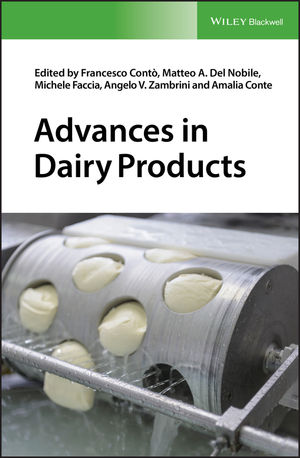Staying Alive: Maximizing Live Bacteria in Fermented Products
Awareness of the potential health benefits of consuming cultured dairy foods containing live bacteria is growing.
Awareness of the potential health benefits of consuming cultured dairy foods containing live bacteria is growing. This can be attributed to the efforts of many companies to convey such messages (through television, worldwide web, product packages, and consumer publications. Dannon’s DanActive product clearly states on the label it contains L casei immunitus and provides additional health messaging details in the companies websites.
Yoplait states that its yogurt “may naturally support healthy digestion, with live and active cultures. Similarly Stonyfield Farms states its yogurts contain “six live active cultures that aid in nutrient absorption and enhance digestion”. Simply put, consumers are seeing and hearing more often the message that eating certain products containing live bacteria may be good for them.
Of course positive health messaging around fermented milk consumption is not new. Elie Metchnikoff’s work published early in the 20th century is often cited as the first to make an association between the consumption of sour (fermented) milks containing live bacteria and longer and healthier lives of Bulgarian peasants. Many of the reported health benefits are now associated with consumption of probiotics. Studies suggest probiotics may play a role in reducing the development of allergies, reducing the side effects of antibiotic therapy, managing bowel conditions, to name a few. Further, scientific evidence emphasizes that the bacteria genus, species and strain must be identified in referring to probiotics and health benefits.
So truly savvy consumers who want to gain the many health benefits that have been associated with fermented milks are learning that: 1) Cell viability (live) is important, 2) There may be a minimum amount of beneficial bacteria that must be consumed, and 3) Not all bacteria convey the same degree or type of health benefits.
The National Yogurt Association reinforces the importance of “live” by providing the “Live and Active Cultures” seal for any refrigerated yogurt that (in addition to other criteria) contains 100 million colony forming units per gram at time of manufacture. However, this seal does not distinguish between probiotic bacteria (e.g. L. rhamnosus GG, L acidophilus NCFM, etc.) and the normal lactic acid bacteria used for yogurt manufacture (L. delbrueckii ssp. bulgaricus and S. thermophilus). It has been stated that “some conventional culture based viability assays used in the field of probiotics may yield insufficient data on the viability of cells” (underestimate the number of viable cells) (Lahtinen, 2007).
Nonetheless, viability of probiotics can have clinical, economic and regulatory importance. In supplying and using probiotics today, cell viability/survival can be enhanced or reduced in fermented milk products.
Here are four things to keep in mind:
1) Not all probiotic strains have the same viability. Suppliers of probiotic bacteria are working to improve certain strains for various food systems by activation of stress genes using sublethal treatments.
2) Not all suppliers are alike. Suppliers are working hard to optimize production conditions which can improve probiotic cell viability (i.e., growth medium, cell harvesting time and conditions, pH regulation, atmosphere, cryoprotectants)
3) Probiotic cell viability can be affected by the product. Some starters can be beneficial and other can produce metabolic products that can be inhibitory to probiotic cell viability. Further, other nutrients, and other factors have an effect on cell viability.
4) Packaging (oxygen impermeable), storage temperature, age(shelf-life) can impact probiotic survival/viability.
While the answers to some questions remain unclear, in the near future tools of molecular biology will be used to bring a better understanding of the relationships between probiotics, the ecology of gut microflora, and human health. According to Mary Ellen Sanders, “The science of probiotics and their impact on human health is an emerging area of science. Rapid advances in characterizing the human microbiome-a National Institute of Health priority-will help clarify the role of microbes in health, which is the foundation of probiotic effects.”
This new knowledge coupled with the dairy industry’s ability to take an established probiotic delivery vehicle (milk – that delivers health benefits in its own right) and turn it into a good tasting, economical, and more nutritious everyday cultured dairy food bodes well for consumers’ health and wellness.
Good scientifically based information being used to understand and improve cell viability and to develop health messaging for cultured milk products containing probiotics is available now. A few useful websites to get you going are listed below:
www.usprobiotics.org
www.isapp.net
(website of the International Scientific Association for Probiotics and Prebiotics)
www.nccam.nih.gov/health/probiotics
www.aboutyogurt.com
(website of the National Yogurt Association)
Awareness of the potential health benefits of consuming cultured dairy foods containing live bacteria is growing. This can be attributed to the efforts of many companies to convey such messages (through television, worldwide web, product packages, and consumer publications. Dannon’s DanActive product clearly states on the label it contains L casei immunitus and provides additional health messaging details in the companies websites.
Yoplait states that its yogurt “may naturally support healthy digestion, with live and active cultures. Similarly Stonyfield Farms states its yogurts contain “six live active cultures that aid in nutrient absorption and enhance digestion”. Simply put, consumers are seeing and hearing more often the message that eating certain products containing live bacteria may be good for them.
Of course positive health messaging around fermented milk consumption is not new. Elie Metchnikoff’s work published early in the 20th century is often cited as the first to make an association between the consumption of sour (fermented) milks containing live bacteria and longer and healthier lives of Bulgarian peasants. Many of the reported health benefits are now associated with consumption of probiotics. Studies suggest probiotics may play a role in reducing the development of allergies, reducing the side effects of antibiotic therapy, managing bowel conditions, to name a few. Further, scientific evidence emphasizes that the bacteria genus, species and strain must be identified in referring to probiotics and health benefits.
So truly savvy consumers who want to gain the many health benefits that have been associated with fermented milks are learning that: 1) Cell viability (live) is important, 2) There may be a minimum amount of beneficial bacteria that must be consumed, and 3) Not all bacteria convey the same degree or type of health benefits.
The National Yogurt Association reinforces the importance of “live” by providing the “Live and Active Cultures” seal for any refrigerated yogurt that (in addition to other criteria) contains 100 million colony forming units per gram at time of manufacture. However, this seal does not distinguish between probiotic bacteria (e.g. L. rhamnosus GG, L acidophilus NCFM, etc.) and the normal lactic acid bacteria used for yogurt manufacture (L. delbrueckii ssp. bulgaricus and S. thermophilus). It has been stated that “some conventional culture based viability assays used in the field of probiotics may yield insufficient data on the viability of cells” (underestimate the number of viable cells) (Lahtinen, 2007).
Nonetheless, viability of probiotics can have clinical, economic and regulatory importance. In supplying and using probiotics today, cell viability/survival can be enhanced or reduced in fermented milk products.
Here are four things to keep in mind:
1) Not all probiotic strains have the same viability. Suppliers of probiotic bacteria are working to improve certain strains for various food systems by activation of stress genes using sublethal treatments.
2) Not all suppliers are alike. Suppliers are working hard to optimize production conditions which can improve probiotic cell viability (i.e., growth medium, cell harvesting time and conditions, pH regulation, atmosphere, cryoprotectants)
3) Probiotic cell viability can be affected by the product. Some starters can be beneficial and other can produce metabolic products that can be inhibitory to probiotic cell viability. Further, other nutrients, and other factors have an effect on cell viability.
4) Packaging (oxygen impermeable), storage temperature, age(shelf-life) can impact probiotic survival/viability.
While the answers to some questions remain unclear, in the near future tools of molecular biology will be used to bring a better understanding of the relationships between probiotics, the ecology of gut microflora, and human health. According to Mary Ellen Sanders, “The science of probiotics and their impact on human health is an emerging area of science. Rapid advances in characterizing the human microbiome-a National Institute of Health priority-will help clarify the role of microbes in health, which is the foundation of probiotic effects.”
This new knowledge coupled with the dairy industry’s ability to take an established probiotic delivery vehicle (milk – that delivers health benefits in its own right) and turn it into a good tasting, economical, and more nutritious everyday cultured dairy food bodes well for consumers’ health and wellness.
Good scientifically based information being used to understand and improve cell viability and to develop health messaging for cultured milk products containing probiotics is available now. A few useful websites to get you going are listed below:
www.usprobiotics.org
www.isapp.net
(website of the International Scientific Association for Probiotics and Prebiotics)
www.nccam.nih.gov/health/probiotics
www.aboutyogurt.com
(website of the National Yogurt Association)
Looking for a reprint of this article?
From high-res PDFs to custom plaques, order your copy today!








